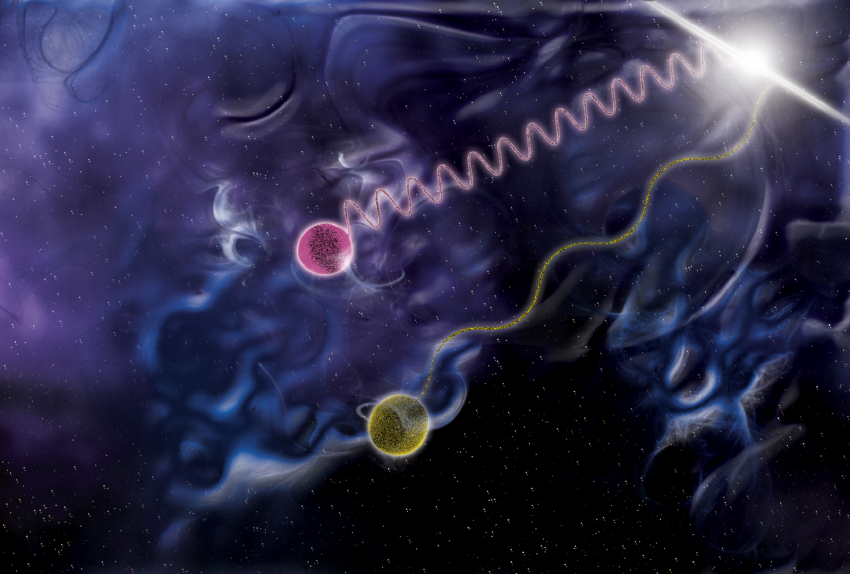
 Credit: NASA/Sonoma State University/Aurore Simonnet
Credit: NASA/Sonoma State University/Aurore Simonnet
The Great Photon Race
At least according to Einstein, the speed of light in vacuum is the ultimate speed limit. Nothing can go faster (though light can go slower, at least through certain materials). But does all light travel at the same speed in vacuum? According to certain theories near the Planck length, (which is incredibly
tiny
- about 100 billion billion times smaller than the size of the proton) our normal notions of space and time break down, and spacetime may become "foamy". Some theories predict that this spacetime foam might cause higher-energy gamma rays to move more slowly than lower-energy photons. The first test of this effect was made recently by the Fermi Gamma-ray Space Telescope. On May 10, 2009 Fermi observed a Gamma-ray burst with its two instruments, the Gamma-ray Burst Monitor and the Large Area Telescope, measuring the arrival times of photons which spanned over a factor of a million in wavelength. This "race" is shown in the artist impression above, where the high energy "purple" photon and the lower energy "yellow" photon are neck-and-neck as they race through the cosmos. Despite this enormous difference in wavelength, and despite the fact that the photons from this particular burst traveled over 7.3 billion light-years, the photon arrival times were nearly identical. To paraphrase Einstein, 186,000 miles per second - it's not just a good idea, it's the law. No matter what your wavelength, apparently.
Published: July 31, 2023
<
HEA Dictionary ● Archive
● Search HEAPOW
● Other Languages
● HEAPOW on Facebook
● Download all Images
● Education ● HEAD
>

Each week the HEASARC
brings you new, exciting and beautiful images from X-ray and Gamma ray
astronomy. Check back each week and be sure to check out the HEAPOW archive!
Page Author: Dr. Michael F. Corcoran
Last modified Tuesday, 27-Feb-2024 10:15:13 EST


